Waxing Before Storing
In the Caribbean, it is common practice to wax a boat before lay-up for hurricane season, then again after returning to the boat, often in November or December. Having read several times in PS that wax provides little UV protection, and given that our boats are not seen for six months while on the hard, is there any real return on the considerable expense and/or elbow grease before storage? Would not waxing just before winter launch be sufficient?
Thomas Nunn
Jumbie, Robertson and Caine 45,
Fajardo, Puerto Rico
We’ve found no evidence to support claims of significant UV protection from wax. The measured screening is only about 3-5 percent and protection wears off within months. However, wax reduces ozone and oxygen penetration, and that likely has some benefit. This has been studied with rubber tires, but the wax was formulated into the rubber, not applied later. Finally, we know of boats from the 1970s that have seen very little wax, but still have gelcoat that can be polished to a “like new” shine. A pre-storage waxing might help prevent dirt buildup, but is probably not worth the expense. The goal when caring for gelcoat is to minimize micro-abrasions, which take their toll over time. One place we like to wax when storing our boat is on the deck, which has made it easier to remove stains when we return. We use a spray wax (see “Searching for Spray Shine,” PS December 2014), or a one-step cleaner wax (see “One Step Cleaner Waxes,” March 2007) to protect these areas of the deck. Wash/wax concentrates would also work (see “Best Boat Soaps for a Regular Wash Down,” PS January 2014).
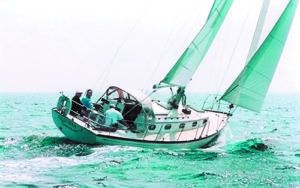
Bowditch-approved Albergs
I had a Rhodes Pearson Vanguard 32 for 21 years, and I now have one that is like that only more so, the Alberg designed Cape Dory 33, a real gem that I have had for 19 years. I’m into classic designs, full keels, heavy etc. At 81 in Maine there is the simple joy of just being out there amongst other boaters. The CD 33 has carried me far.
James Bowditch
Claudia, Cape Dory 33
Camden, ME
EMT Experience
Regarding your Blog post “Improvised First Aid Afloat.” Much here is basic to those of us who are both ambulance riding EMTs and Wilderness EMTs: utilize what you have. However, the backwards baseball cap with the cravat for tension scares me. A patient without some sort of an airway will always, always die. Anything such as a cravat drawn up tight enough to provide cervical stability is far too likely to restrict the patient’s ability to breathe.
Garry Schneider
Rising Wind, Mason 43
Eggemoggin Reach, ME
The aim is to provide support without constricting, but your concern is
certainly warranted, especially when the patient has serious injuries.
As a subscriber, you have free access to our back-issue archive—more than 1,500 articles. Be sure to dive in and dig around when you’re looking for how-to tips or info on sailing products. Here are a few topics you might find relevant this season.
Storm Prep
If you haven’t yet given hurricane season a thought, you might want to start with our July 2008 report, “Lines, Snubbers, and Other Gear for Battening Down Ahead of Storms.” Technical Editor Ralph Naranjo’s “Tropical Storm Dos and Don’ts” (November 2011) and Editor Darrell Nicholson’s blog post “Preparing Your Boat for a Tropical Storm” (June 26, 2012) should also be required reading.
New Boat Shopping
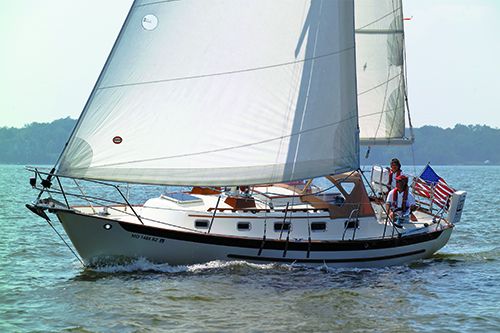
The PS archive includes dozens and dozens of sailboat reviews, from trailer sailers and small cats to racer-cruisers and bluewater voyaging boats built for a family of four. You can search the reviews using the alphabetical index link under the “Sailboat Reviews” tab on the homepage. Also the two-volume ebook series “Entry-level Cruiser-Racer” is a compilation of boat reviews of popular racing-cruising boats; available in online bookstore. If you’re planning to carry out a preliminary boat survey—or just want to be well-versed when you go shopping—read our do-it-yourself survey checklist for boatbuyers in the June 2012 issue. Another must-read resource is “A Sailor’s Guide to Marine Insurance,” which was published in the October 2012 issue. New boatowners would also be well-served by Don Casey’s “This Old Boat,” available at our online bookstore.
Galley Outfitting
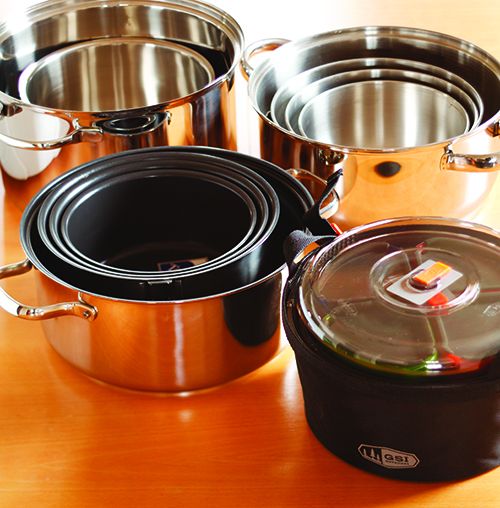
Before you outfit your galley, be sure to read these reviews of galley tools. For those who need quick-fix dinners that can basically cook themselves while you’re on watch (or enjoying cocktail hour), you’ll find our report on pressure cookers in the December 2010 issue and thermal cookers in the May 2016 and September 2012 issues. If you are in the market for a galley oven-range combo, you’ll find our latest test on those in the July 2007 issue, along with an update on small stoves. Two other items we consider cruising-galley staples are the coffeemaker (January 2014) and nesting cookware (April 2009).

Spinlock Knee Pads
Regarding your report on knee pads for sailing (see “Knee Pads and Braces for Sailing,” PS July 2018), I am an older J/80 sailor and cruiser and I swear by the Spinlock knee pads. They have different sizes so you get a good fit with right and left pads formed properly around the knees that won’t slip from side to side up or down. The wide stretch material breathes well, dries quickly and Velcro straps adjust the fit. The knee cap material is a very durable cloth type that doesn’t slip and have lasted three seasons of racing with no noticeable abrasion. They fit well my foulies/salopette or wind pants and are comfortable for those six-hour regattas.
Steve Maynard
PS Online
Sounds like we need to do an update, thanks for your input. We’re on it.
Securing Boom
Regarding your report, “A Sure Way to Secure the Boom,” (see PS December, 2018), before turning in I lead halyards out to the lifelines, pass them twice around the lifeline, and then clip the shackle around the halyard itself (not the lifeline). If you clip directly to the lifeline, all night long you will hear ‘click, click, click’ as the shackle wobbles back and forth, hitting the stanchion, again and again. ‘But not too much tension, otherwise the lifeline itself gets unhappy. For the main boom, the gallows works great. For the stay sail club boom on a track, move the track stops to lock it to one side, then tension to the opposite side with a short piece of line.
Peter Walsh
Sans Souci, Tayana 37
via PS Online
Sea Anchors
Thanks for the article on sea anchors (see “Sizing Sea Anchors, February 2009). Very informing. I have a Fraser 36. It has a high bow with a lot of reserve buoyancy. We have a rear cockpit and a traditional three-board with a sliding main hatch. We tend to yaw quite a bit at anchor. The bow lifts very readily, maybe too readily, in steep choppy waves. I am wondering how these attributes would affect the choice between a drogue and a sea anchor. I would have gone with a drogue, if not for thought of following sea breaking on our hatch boards.
Joe Eaton
Fraser 36
PS Online
There is no easy answer to your question, as every boat is different, and the best storm tactic can vary according to conditions. For a look at how similar boats manage heavy weather, you can review the drag device database (dragdevicedb.com). As for the hatch, you will want to have confidence here. There are some extremely rugged custom hatch designs, but you can also beef up your existing companionway boards and hatch (see “Bulletproof Companionways,” PS Mailport, October 2016).

Walter Cronkite’s solution
Regarding your recent blog post “A DIY Solent Stay,” I had a cutter, a Kelly Peterson 44. Great sailing cruiser. The set of the roller-furled 110 was not that great. A Solent would have been my preference. Legendary newscaster Walter Cronkite had an interesting custom arrangement on his boat. He had his jib and Solent on two stays separated to properly function, and both were on a yoke that would swivel. Just one attachment at masthead and one on stem. Of course both points had high-thrust bearings. The active sail would swivel aft when in use and the inactive would swivel forward complete out of the way! Clever arrangement. Yes, you would get a little “dirty” air from the inactive sail but everything is a trade-off. Probably one that I would take if I could afford all that custom work.
Fred Read
Tartan 37
Oriental NC
Self-tacking Solent Stay
A smaller headsail, or storm jib is indeed preferable to rolling up a genoa when heading windward in winds over 20 knots. But adding it on as a retrofit brings up the issue of control lines. Ideally, the sail should be fitted on to a self-tacking track, but these are quite awful if not installed in the original design. There are a number of simple solutions incorporating a line attached to the base of the mast [or other forward fixed point] and led to the clew of the jib, and back to a deck organiser in the cockpit. This sheet can be left alone when tacking upwind. We sail in the Aegean where wind can be anything from ‘nothing’ to 35 knots sometimes with quick changes, so it pays to be adaptable. If you have any comments or recommendations for such rigs, it may well interest other readers as well, myself included.
Olivier Vetter
via PS Online
We’ll look at a few popular self-
tacking staysail examples in a
future report.
Solent Solution
We had a custom rig built for our boat, a Valiant 40 cutter with a bowsprit that sets the forestay two feet further forward. It was designed to allow both a Solent sail and/or a staysail. We sail the boat as a cutter and have no problem at all with the inner forestay interfering with the genoa and jib sheet. We just backwind the staysail until the clew of the genoa has moved to the leeward side. The staysail is roller-reefing too, and is small and very easy to handle, even in a blow.
Greg Malmberg
via PS Online
Fuel Additives
In your conclusion to your December 2019 report “Hidden Impacts of Metal Fuels and Chemical Stew,” PS recommended additives contain metal deactivators that sequester the offending ions, rendering them harmless.” I can’t find any information on your site of recommended diesel additives, e.g. BioBor, that specifically state they contain metal deactivators. Any help would be most appreciated.
Eric Stephan
Indara, Norseman 447
Gig Harbor, WA
Although we could not confirm the chemistry in these proprietary additives, we can accurately infer that the products that did not cause copper and brass corrosion in our tests contain “deactivators.” Metal deactivator is a broad term for anti-corrosion additives that control copper corrosion and prevent the copper ions from becoming aggressive catalysts in solution. Metal deactivators are also used in lubricating oils and engine coolants. It is not a term you will see on labels.
No standards regulate the fuel additive industry, and the top contenders closely guard their formulas. This is why Practical Sailor does corrosion testing of additives. Recent PS tests have prompted some of the world’s leading additive-makers to improve their formulas for better anti-corrosion performance in the marine environment. Good for them, and good for all of us.
We just started another round of tests, this time on engineered ethanol-free gasoline products. The results will be out in the Fall, just in time for storage season. For a comprehensive look at fuel protection, including tips on dealing with a contaminated tank, our eBook “Fuel Treatments,” available at our online bookstore, has you covered (see www.practical-sailor/products).
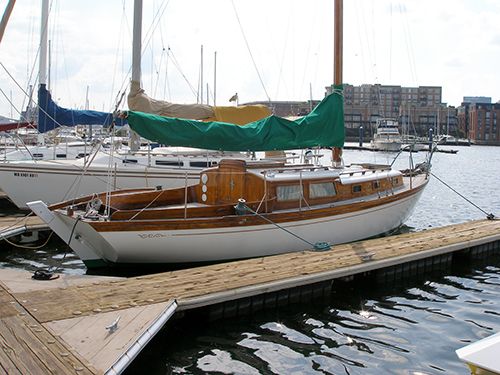
Sailing During Lockdown
Regarding your recent editorial “Sailing as an Essential Activity,” (see PS June 2020), why can’t people decide for themselves whether or not to go out for a sail? The Land of the Free applies no more, not to mention Water of the Free. With the rationale employed for the lockdown, why not ban boating altogether, since it always entails an element of risk to personal safety and possible risk of death? Maryland’s indiscriminate ban on recreational boating in particular makes no sense.
Michael Randolph,
Shandy, Bermuda 30
Baltimore, MD
The risked posed to others (which varies widely by situation) was also a reason for the temporary ban. The ban, now lifted, also freed up enforcement agencies for more vital duties.
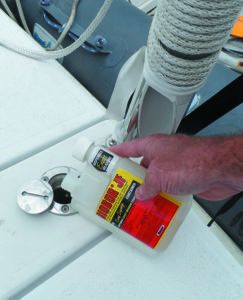
2015 report “Additives vs. Gum, Sludge.”
Merino and Gortex
Regarding your recent report Merino wool (see “Wool Sock Update,” PS May 2020), I don’t normally sail with sea boots when cruising but prefer sneaker-style deck shoes. On a cruise down the US East Coast in the late Fall I wore a thin merino wool sock covered by a Gortex sock and slipped into the sneaker deck shoes. It was a little snug but not so much to cut off circulation. I felt much more agile than I did stumbling around in sea boots. With regards to your blog post on Carl Alberg boats, I totally agree with your sentiments. I had a Cape Dory Typhoon 19 that I sailed all over Galveston Bay. I then stepped up to an Albin Vega 27. Both are superior sailing craft and perfect for single-handers. I loved to weekend on the Vega. Then stepped up to an Offshore 33 cat ketch with wishbone booms, and, among bigger boats that I’ve sailed, it was the best singlehander along with a Nonsuch. I lived on Valhalla II on the Chesapeake, and kept her when I bought a Baba 40 to live aboard for a while in Baltimore Harbor. Great boat, but even with rerig with electric winches, it was not an easy singlehander. After several years, I sold her and am now refitting and furnishing Offshore 33. I’m retiring soon and hope I can soon go play on the coastal waters.
David Ready
Offshore 33
Virginia Beach, VA
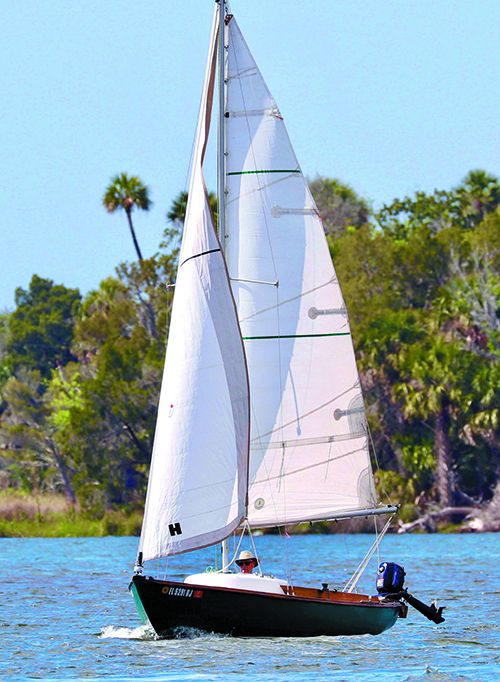
shot of his Carl Alberg-designed Cape Dory Typhoon reaching across Florida’s Crystal River.
With international cruising being limited due to concerns over COVID-19, we weren’t surprised to see a resurgence of interest in smaller boats celebrated in our recent blog post “Small Boat Dreams and Carl Alberg’s Classic Daysailors.” You can find tests of most of these classics in the Boat Reviews section of Practical Sailor Online.
Paceship PY23
I started my sailing on Lake Huron with a lovely keel/centerboard Paceship PY23 at a time when I thought “tender” referred only to steaks. Great boat, and looking back, I did some crazy things, like flying a spinnaker single handed. But the sea gods took care of me in my youth. I eventually moved on to a Northern 29 and was amazed by its performance in windy conditions on Georgian Bay. The 50 percent ballast ratio kept it stable and kept me safe. After 13 years with the Northern I downsized to a pristine Alberg 22, the most fun, most handsome boat I ever owned. I often wish I had kept it, but my wife insisted we should again go bigger. Today I’m back to cruising on our Ticon 30, among the most spacious,rugged, and comfortable cruisers of the mid ’80s. The Ticon performs amazingly in winds above 15 knots, and with self-tailing winches, autohelm and practice, it can be single-handed.
Ian Cochran
Via PS Online
Alberg 21
Don’t forget the Alberg 21(his only regression I believe, to a fin keel), the Typhoon Sr., South Coast 23,(same hull as the Kittiwake), Cape Dory 22, Cape Dory 25D, Pearson Ariel(same hull as the Commander), and the Bristol 27, all great boats.
Larry Cooperman
Cal 20
San Diego, CA
Alberg 35
I had a 1962 Alberg 35. Built in Rhode Island, it was among the first true voyage designed fiberglass boats. I cruised and lived aboard it for ten years, then lost it to Hurricane Andrew in Miami. A 130-foot steel barge went sideways through the marina and pulverized boats. Bow over there, port stern over there, cabin top not to far away, etc. But not the Alberg! Although trounced into the bottom and run over, she was completely whole. She was totalled only by the decay of the wood interior soaking in diesel-soaked sea water for three weeks. But when we floated her she was completely whole!
Fred Read
Tartan 37
Oriental, NC
Quickstep 24
Since others have branched out beyond Alberg, I’ll add the Ted Brewer Quickstep 24. It has a modified full keel, with the sump set well back from the forefoot and the “Brewer bite” out of the after section before the attached rudder, so she never misses stays, and is a little quicker, but still only draws 3.5-feet. She is a little more tender, probably, but she heels over on her shoulder and stops there. My Quickstep likes a reef when the wind gets much over 15 knots, and when trying to tack down the Intracoastal with sandbars on either side I sometimes wish I had a fractional jib, rather than the masthead genoa she came with. Functional cabin and comfortable cockpit, and a pretty boat.
Frank Milhous
via PS Online
Bayfield 25
There is also the Bayfield 25 and 29-foot designs, with the 29-foot having a cutter, two foresails, sailing rig. The nice thing about shallow-draft full keels is you can almost always find a spot to anchor even if arriving late in the day to a crowded spot as the fin keelers have to stay in the deeper water. If the breeze gets up the full keel designs can keep up with fin keels. In light airs the full keel needs some big sail area to hoist, genaker or such, in order to ghost along and cover the miles in a not altogether unpleasant way to get where the breeze takes you to when the sun gets over the yardarm towards the day’s end. We had great fun in our Bayfields as the kids grew up. Moving inland broke that bond with the salt sea.
Brad Forber
Boatless in BC
Kootenay Lake, British Columbia

Practical Sailor welcomes reader comments and questions. Send email &
reader photography (digital .jpeg 1MB or greater) to [email protected]; include your name, homeport, boat type, and boat name. Send any broken gear samples to Practical Sailor, 1600 Bayshore Rd., Nokomis, FL 34275


































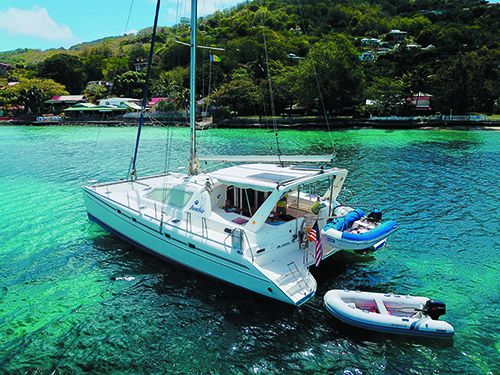







For Darrel Nicholson, Are you available to speak in person or via Zoom to the Gulf Coast Sailing Club in Naples FL? We have monthly meetings and our membership would love to have you visit (personally or electronically) to give a short (30 -40 minute) talk. Please let me know and we can discuss schedule. Looking forward to your reply.